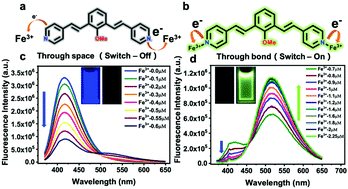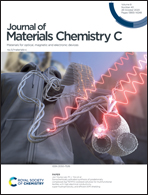Two-stage metal ion sensing by through-space and through-bond charge transfer†
Abstract
A highly selective colorimetric and ratiometric “two-stage”/“off–on” type fluorescent probe with an ability to exclude other heavy and transition metal ions has been designed and synthesized. Low concentrations of Fe3+ cause through-space charge transfer which leads to fluorescence quenching exceeds 96%, and a further increase of Fe3+ concentration results in the formation of a complex with the maximum emission peak of 1,3-bis((E)-2-(pyridin-4-yl)vinyl)-2-methoxy benzene (BPVMB) being shifted largely by 100 nm (from 416 to 516 nm), which was examined by fluorescence, absorption detection and femtosecond transient absorption measurements on the basis of intramolecular charge transfer (ICT).



 Please wait while we load your content...
Please wait while we load your content...